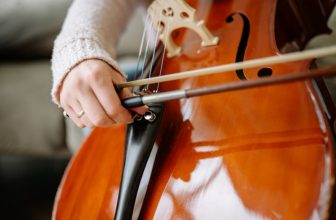10 Different Types of Harps
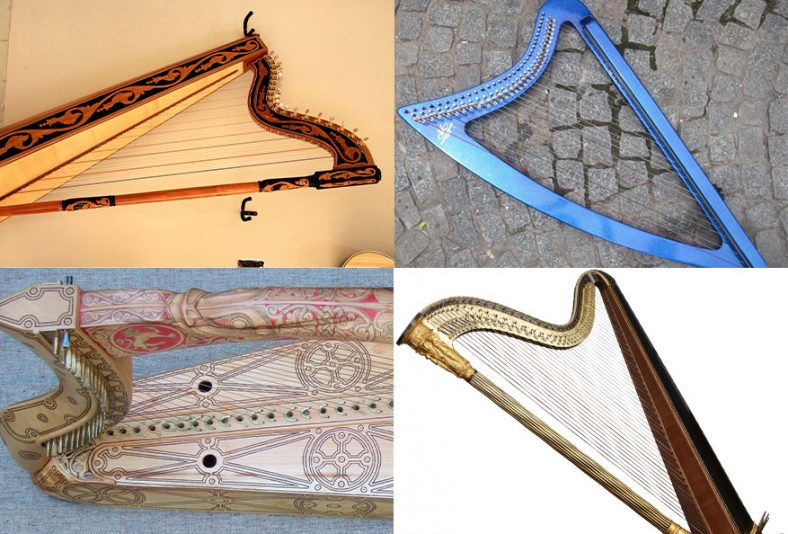
There are many different types of harps with different designs that originated in different countries. Only a few types of this long-surviving instrument are still popular while the others have faded into obscurity.
Harps are one of the calmest and heavenly instruments in the world. You may have found a scene in movies and cartoons where angels play harps. The instrument goes so well with the positive spiritual attachment. Harps can truly create that calm and peaceful vibe with its looks and its music.
Harps are one of the earliest instruments, with them appearing in depictions from as far back as 3000 BC. Since then they evolved and found different sizes, shapes, and qualities from different parts of the world.
Contents
1. Lever Harps
Lever harps are one of the two major categories of harps. These are a comparatively smaller and more portable form of harps. Lever harps suit more with folk and classical music. It uses the levers for adjusting the strings’ tension for producing sharps and flats.
Lever harps may have 20 to 40 strings. Having 34 strings is most usual.
Of course, there are different forms of lever harps such as lap harps and floor harps. The lap harps can be played placing on your lap or on a table as they are small and light-weighted. The floor harps are larger in size. You have to place it on the floor and lean your shoulder against the harp and play it.
Though there are some limitations, people usually start with lever harps as it is budget-friendly and easily portable. You can later shift to the pedal harp if you want.
2. Pedal Harps
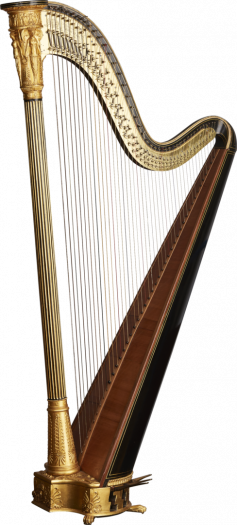
Pedal harps are probably the most popular form of harps in 2021. This type of heps is comparatively larger and heavier than lever harps. It has steel strings with a combination of nylon strings. The number of strings can be 40 to 47.
Just as the name suggests, pedal harps have built-in pedals. The pedals play the main role in playing sharps and flats of music. Pedal harps have 7 pedals (1 for each note). The harpist has to use their feet to press the pedals to get the necessary changes in the tone.
Pedal harps are usually more expensive and a bit harder to learn in comparison to lever harps. But it gives the highest and advanced music options and quality. That’s why many harpists start with lever harps and then shift to pedal harps.
3. Latin-American/Paraguayan Harps
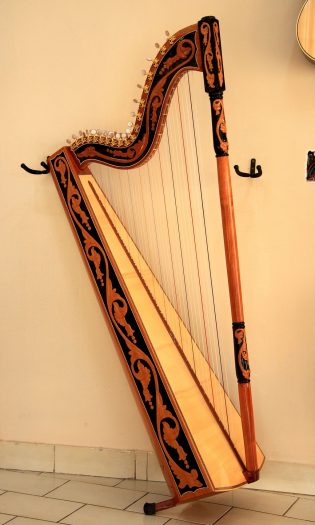
Paraguayan harps are not so popular among today’s harpists. So, probably you have never seen one in reality. Latin-American/Paraguayan harps have a straight pillar instead of the curved shape in the traditional ones.
It may have 32 to 46 strings (all even numbers). The instrument body is made with tropical wood, pine, and cedar. The instrument is 4.5 to 6 feet long and weighs about 3.5 to 4.5 kg. It also produces a very unique but beautiful tone.
4. Celtic/Folk Harps
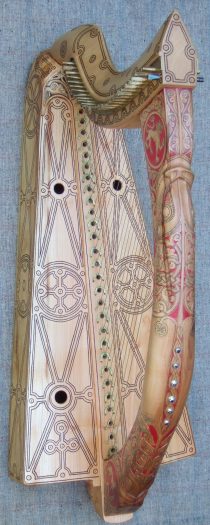
Celtic harp, also known as the Folk harp, is a traditional instrument in Ireland and Scotland. Technically it has a lever harp mechanism, as it does not have any pedal. The modern Celtic harps can be a bit different than the ancient ones.
You may find a Celtic harp in different sizes with 26 to 38 strings. Though the old traditional harps were super difficult to play, the refined ones are much easier to play and maintain in comparison.
5. Modern Wire Harps
When most of the harps are made with nylon strings, this form of harps uses wire strings. This 14th centuries origin was often used to support poetry and songs. The strings are typically made of brass or bronze.
The sound quality depends on the size and structure of the instrument. The bell-like tone it produces made it most famous. But the traditional wire harps can’t play flats and sharps in music. Of course, there are lots of varieties that enable you with extended features.
6. Electric Harp
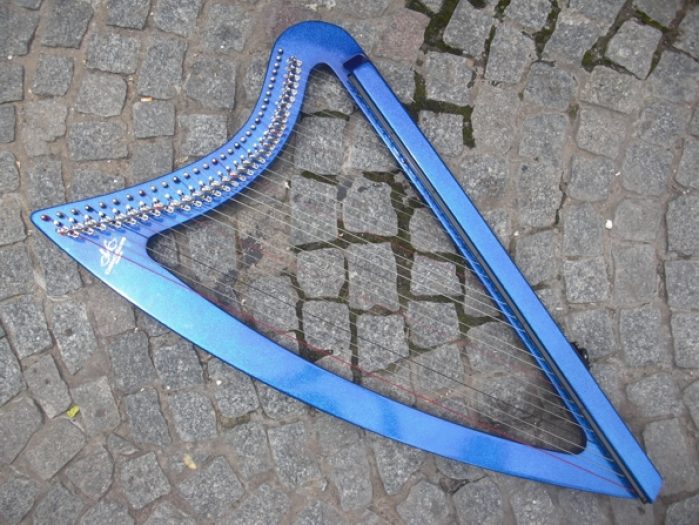
Electric Harps are getting more popular among today’s musicians starting from the late 1950s. You will find electric harps with either lever or pedal mechanism. It follows almost the same playing technique as the acoustic form of harps with the addition of a sophisticated amplification system.
Electronic harps are almost like acoustic harps available in both shallow or solid bodies. It may be played acoustically or electronically, with or without amplification. But the sound is never similar to the traditional harps.
7. Cross-Strung Harp
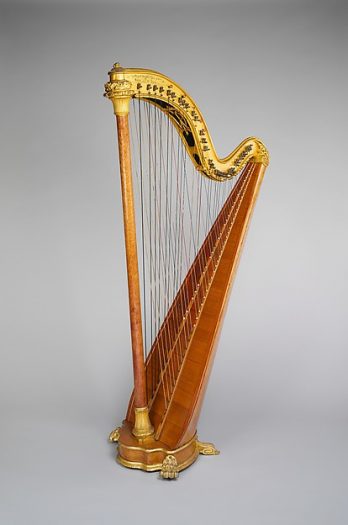
Cross-strung Harp is pretty much unique among other genres of harps. It has two rows of strings across each other without touching one another. The most interesting thing is, it can play sharp and flats without using pedals or levers. It is fully chromatic.
The X-shaped pillar will tell you that it’s a Cross-strung harp. The strings are made of gut, nylon, or bronze. Many find it easier to learn and play this form of Harps as it has a diatonic “home row” of strings.
8. Bell Harp
Bell harps, also known as English harps are not even close to the shapes of traditional harps. It has a shape close to zither but sounds like bells. It has at least eight strings.
You have to hold it uprightly, then use your thumbs to play the instrument by gently swinging it with both hands.
9. Harp Guitar
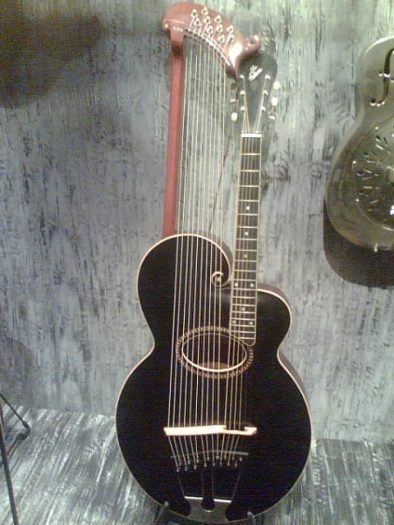
Just as the name suggests, harp guitar is simply a combination of guitar and harp in the form of one instrument. This 19th-century addition is quite unusual but can be a good option for those who already play guitar and want to take their guitar skills to the next level.
A harp guitar may have 20 strings in three rows. Of course, it requires extraordinary skills to play a harp guitar.
10. Wind Harp
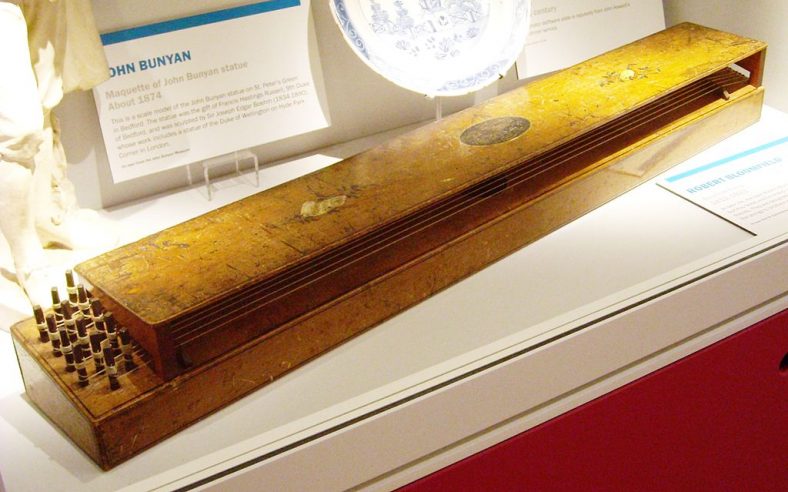
The last type of harp on our list is Wind Harp, also known as Aeolian. Again it is not a very familiar form of harps but the instrument is very interesting. It is a harp that is controlled by the air or wind!
To make this instrument work, you have to find a windy place where the wind may blow across the strings. You will get a weird siren-like tone from the very next blow of a little strong wind.
Summary
Though people mention lever harps and pedal harps as the main types of harps, there are a lot of other types as you can see in the above article. Each type has its unique qualities.
If you want to buy a harp as a beginner, go with the one you like keeping in mind if, there is an available source to learn the instrument. Choosing an unusual type of harp won’t be a good option if you can’t find a teacher!
Image credits (also used in featured image):
Pedal Harp Image By Museum für Kunst und Gewerbe Hamburg – Museum für Kunst und Gewerbe Hamburg, CC0, Link
Latin-American/Paraguayan Harps By Aij, CC BY-SA 3.0, via Wikimedia Commons
Celtic/Folk Harps By Bobbobb, CC BY-SA 3.0, via Wikimedia Commons
Cross-Strung Harp By Metropolitan Museum of Art, CC0, via Wikimedia Commons
Harp Guitar By Von-zoid, CC BY-SA 3.0, via Wikimedia Commons
Wind Harp By Simon Speed, CC0, via Wikimedia Commons


